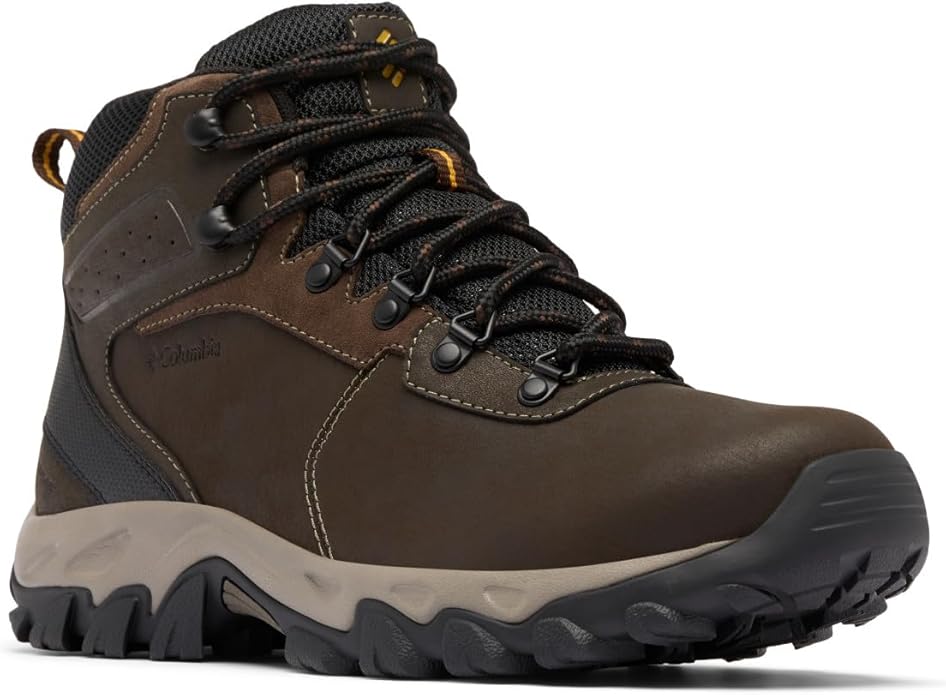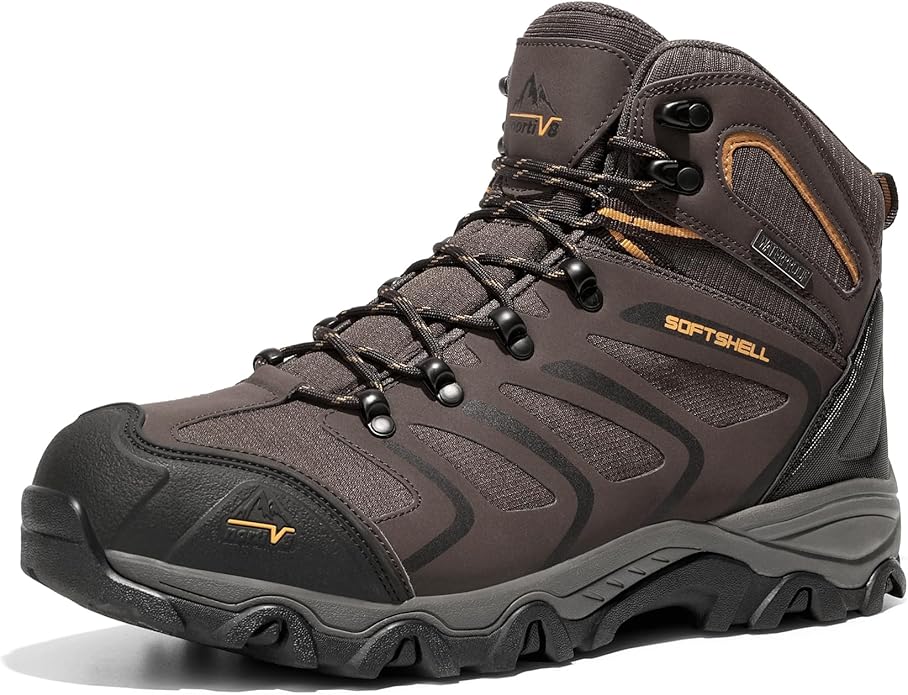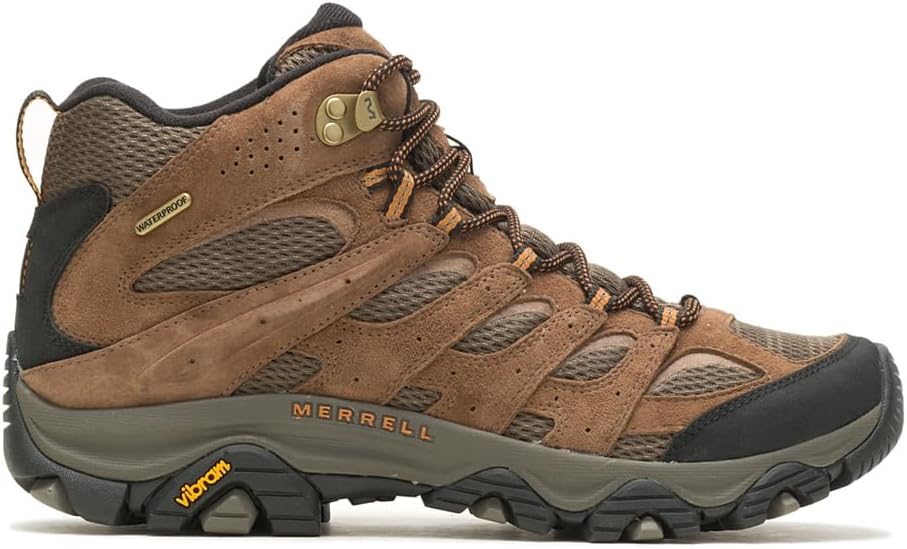I’ve always believed the right pair of hiking boots can make or break a trail day. Blisters, sore ankles, and soggy socks can turn an adventure into misery. So, I set out to test five of the most popular men’s hiking boots across muddy creek crossings, rocky climbs, and long, hot trails. My goal? To find the boots that deliver real comfort, grip, and durability for different kinds of hikers.
I hiked between 4–10 miles per outing with a light pack, testing waterproofing in the rain, grip on wet rocks, and cushioning over long days. What follows is a real hiker’s guide to the best men’s hiking boots, written to help you find the right fit for your style, terrain, and budget.
Quick Buying Guide
- Do you need waterproof boots for rainy, muddy conditions, or breathable ones for hot climates?
- How heavy is your pack? (Heavier packs need stiffer boots with more ankle support.)
- Will you be hiking short trails, all-day treks, or multi-day backpacking trips?
- Do you prefer lightweight synthetic boots or long-lasting leather boots?
- What’s your budget — starter-friendly or premium durability?
Types of Hiking Boots
| Type | Best for | Short description |
|---|---|---|
| Lightweight trail shoes | Fast summer hikes | Light, breathable, flexible, but minimal support |
| Mid-cut hiking boots | Versatile hikers | Good mix of support and weight for day hikes |
| Backpacking boots | Multi-day trips | Stiffer sole, strong ankle support, heavy loads |
| Waterproof leather boots | Wet, muddy trails | Rugged, durable, less breathable |
| Budget trail boots | Casual use | Affordable, decent performance, lower durability |
Our Top Picks by Category
| Category | Pick (click name to view) | Why pick it |
|---|---|---|
| Best overall | Timberland Men’s White Ledge Boot | Classic waterproof leather with great traction |
| Best mid-range waterproof | Columbia Newton Ridge Plus II Waterproof | Affordable comfort, waterproofing that works |
| Best budget pick | NORTIV 8 Men’s Waterproof Hiking Boots | Lightweight, surprisingly grippy, very affordable |
| Best grip & stability | KEEN Targhee III Waterproof Mid | Excellent outsole grip, roomy fit |
| Best all-day comfort | Merrell Moab Mid Waterproof | Cushioned, stable, proven comfort |
Detailed Hands-On Reviews
Timberland Men’s White Ledge Boot

Best for: Rugged day hikers who want classic waterproof leather.
Why we like it: These boots combine durable leather with a waterproof design that holds up in wet and muddy conditions. The traction is strong, especially on rocky descents, and while they’re heavier than synthetic boots, they feel solid underfoot. Break-in was quicker than expected for leather.
Pros
- Durable premium leather build
- Dependable waterproofing
- Secure traction on wet terrain
Cons
- Less breathable on hot days
- Heavier than synthetic options
Columbia Newton Ridge Plus II Waterproof

Best for: Hikers wanting comfort and waterproofing at a mid-range price.
Why we like it: Right out of the box, the Newton Ridge felt comfortable. The cushioning held up during 8-mile hikes, and the waterproofing handled light rain and creek crossings well. It’s a great all-rounder for most day hikes.
Pros
- Comfortable fit, minimal break-in
- Solid waterproofing for most conditions
- Affordable price point
Cons
- Midsole cushioning wears faster over time
- Slightly bulkier feel compared to lighter boots
NORTIV 8 Men’s Waterproof Hiking Boots

Best for: Budget-conscious hikers and beginners.
Why we like it: For the price, these boots impressed me. They’re lightweight, easy to wear, and surprisingly grippy for basic trails. Waterproofing works for light rain but isn’t as tough as premium boots. Perfect if you’re starting out or only hike occasionally.
Pros
- Very affordable
- Lightweight and comfortable
- Decent traction for casual trails
Cons
- Waterproofing less durable over time
- Shorter lifespan than premium boots
KEEN Targhee III Waterproof Mid

Best for: Hikers who need grip and stability on technical trails.
Why we like it: The KEEN Targhee III stands out with its roomy toe box, supportive fit, and excellent outsole grip. On wet rocks and uneven trails, I felt confident with every step. It’s a little heavier but built for stability.
Pros
- Excellent grip on technical terrain
- Comfortable wide toe box
- Rugged, long-lasting construction
Cons
- Heavier than lightweight boots
- Not ideal for narrow feet
Merrell Moab Mid Waterproof

Best for: Long hikes where comfort is top priority.
Why we like it: The Merrell Moab line is famous for comfort, and this model proves why. Cushioned midsoles and supportive heels made long hikes feel easier, even with a pack. Waterproofing worked well in steady rain.
Pros
- Very comfortable cushioning
- Reliable traction for varied trails
- Easy to wear all day without hotspots
Cons
- Less rugged than full-leather boots
- Fit may feel narrow for some
Other Things to Consider
- Fit is critical. Always try with hiking socks and leave toe room for descents.
- Break-in matters. Leather boots need more time than synthetic.
- Waterproof vs breathable. Waterproof boots protect in rain but trap heat in summer.
- Weight. Lighter boots reduce fatigue, but heavy boots give more stability under load.
- Outsole design. Deep lugs and sticky rubber grip better in mud and rocks.
- Budget. Pricier boots often last longer. Budget boots are fine for occasional use.
- Care. Clean and dry boots after use; condition leather boots to extend life.
Frequently Asked Questions
Should I choose leather or synthetic hiking boots?
Leather boots (like Timberland) are more durable and water-resistant, great for rugged, wet trails. Synthetic boots (like Columbia or Merrell) are lighter and more breathable, ideal for warm climates or fast hiking.
How long does a hiking boot last?
Leather boots can last 3–5 years (500–1000 miles) if cared for properly. Synthetic boots usually last 2–3 years with regular use. Outsoles wear fastest, but some premium boots can be resoled.
What’s the best way to break in hiking boots?
Wear them for short walks before long hikes. Use hiking socks, lace securely, and gradually increase distance. Leather boots benefit from a little leather conditioner, but avoid over-softening.
Are waterproof boots too hot for summer?
Yes, waterproof membranes trap heat. If you hike mostly in dry, hot climates, non-waterproof boots or breathable mesh shoes are cooler. In mixed conditions, waterproof mids are the safest bet.
Can hiking boots double as everyday shoes?
Yes. Many boots (Merrell, Columbia, KEEN) are cushioned and stylish enough for daily wear or travel. Just note that heavier backpacking boots may feel clunky for casual use.
Conclusion
After real-world testing, I can confidently say each boot has its strengths. The Timberland Men’s White Ledge Boot is best if you want rugged leather durability and waterproof protection. For a comfortable and affordable mid-cut, go with the Columbia Newton Ridge Plus II Waterproof. If you’re starting out or on a budget, the NORTIV 8 Men’s Waterproof is hard to beat. For stability and grip on tough terrain, the KEEN Targhee III Waterproof Mid shines. And if comfort for long days is your top priority, the Merrell Moab Mid Waterproof remains a reliable classic.
